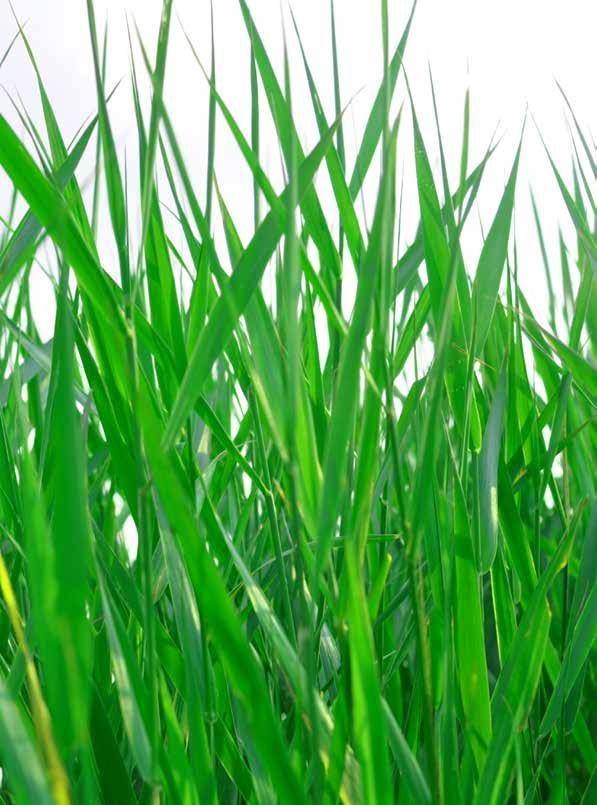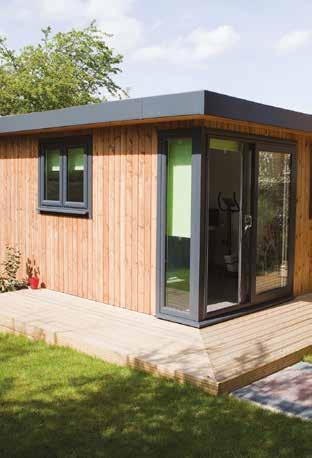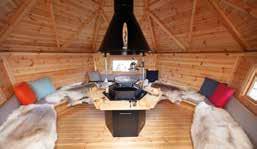
5 minute read
Garden
The Derbyshire Derwent – a wildlife artery through the Peak
as a flock of the Winding its sinuous way through the Derbyshire Peak District, the River Derwent is a wonderful natural artery for wildlife and as such forms a ‘green corridor connecting the uplands Fallow Deer of the Dark Peak to the dales and valleys further south. Once the river has reached Chatsworth House and Park its full glory becomes obvious and it is a vital, living part of one of the UK’s most popular tourist attractions, the ‘Palace of the Peak’. At Chatsworth the Derwent is home and habitat for a rich diversity of wildlife species, particularly birds. Grey herons are nowadays ubiquitous along the watercourse and always easy to spot. Kingfishers on the other hand are present but often quite secretive. However, I did spot one flying along the riverbank in front of the House; diving for fish and then landing on the bank to survey its territory. For such a brightly coloured bird, the ‘jewel of the riverbank’, they do hide away surprisingly well! Dippers are also quite common here at Chatsworth and pairs will jealously guard their chosen territorial stretch of the river. They breed quite early in the season and can be heard singing in February and March. Other fish-eating birds on the river now include goosanders and occasional red-breasted mergansers, but also cormorants. These birds which look almost prehistoric were once rare at inland sites such as Chatsworth. However, they have now recovered from persecution and pollution to become frequent and almost commonplace. They love to sit out on exposed dead branches of old trees and dry their wings. Habitually used, these trees become marked with splashes of white cormorant droppings.
Advertisement
Fallow Deer
The river and its flood meadows also birds moving through on migration such provide habitat for ‘winter thrushes’, the redwings and fieldfares. Pied wagtails frequently gather in good numbers along the riverbanks and on shingle areas in the Pied Wagtail river. They love the extensive grasslands of the short-grazed park where they mingle with fallow deer, red deer, and sheep. Their constant activity, high-pitched calls, and flickering tails suggest a bird that exudes energy and especially so as they gather in groups prior to going to their chosen Grey Heron night-time roosting sites. Wagtails are very adept at finding cosy, sheltered spots to roost overnight. At my university’s citycentre campus they gather in shrubberies near a huge hot air vent – and believe me, there is plenty of hot air given out! At Chatsworth Park, watching the riverside birds is complemented by chance to see deer at close quarters. In the late afternoon as light is fading the fallow deer drop down to the riverside and if you are really lucky they may troop across the river to look almost like caribou on an Alaskan migration. The Peak is a wonderful place for nature.

Kingfisher by Paul Biggs

Gardener’s Calendar
If you’ve got shrubs which have become overgrown or misshapen or trees which need cutting back, this is the time to do it, while the sap is less active and the plant is less likely to bleed and become weakened. Cut out dead or diseased wood first then take out stems which are crossing to create a better shape. Remember to always cut above a bud, not too close but not too far and sloping away from the bud at a gentle angle to avoid rotting. Ponds can be cleared of leaves and rotting vegetation, but leave everything you have cleared on the side for a day or two to allow any pond beasties to crawl back in. You don’t need to keep a pond ice free if you don’t have fish, but if you want to give birds access to the pond try floating a ball on the surface. Any wind should push it around and stop ice forming. r While there’s less to do outside, don’t forget to keep an eye on houseplants. Most appreciate a rest from flowering in winter so you don’t need to feed them unless they are flowering. You should also cut back on watering. Let the compost surface dry slightly between watering and don’t leave them standing in water as this will cause root rot. Most don’t like being near open fires, draughts or being exposed to frosty windowsills.
Merry Xmas folks. If you’re like us and found this year hard going, just remember next year’s garden
TOP TIP! If you’re cleaning plots and beds outside only compost healthy material – otherwise you’re transferring disease from one season to the next.

06/11/2018 18:16
DRB Waste Recycling
Household, garden, general building and waste metal removal. Household clearance and removals. Cost effective alternative to skip hire.
Household Waste Metal Waste

Clearance & Removals Garden Waste
Call Dale on 07581 450572 Licensed Waste Carrier
A garden room isn’t just a room in your garden…

it’s a room that adds value to your life, and your home. With 20 years experience in designing, manufacturing and installing garden buildings throughout the UK you can trust that Cabin Master will deliver you The Perfect Space for your garden.

The Perfect Escape. Holiday at home...


with a BBQ cabin. It can become the heart and soul of your garden. Our trademarked sloping wall design not only gives the cabins an unmistakable silhouette, it also makes them very comfortable and enables you to sit back and relax whilst enjoying countless days and nights with your favourite people.


Free Site Surveys Free Design Service No Obligation Quotes Flexible Finance Available

www.cabinmaster.co.uk Visit Our Open Air Cabin Master Village www.arcticcabins.co.uk With 22 Stunning Buildings On Display Call: 0115 932 8888 Opening times: Monday - Sunday 10am - 4pm
The Rose Gardens, 251 Toton Lane, To advertise please call Voice Team on 01773 549 035Stapleford, Nottingham NG9 7JA.



